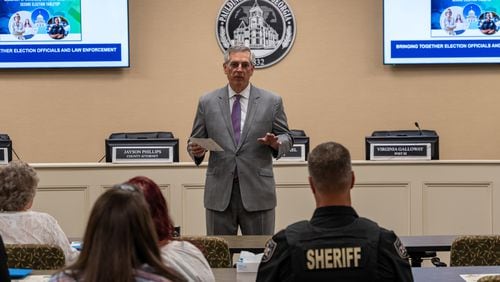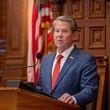Lawmakers meeting now in Atlanta for the 2018 General Assembly session are focused on winning -- midterm elections and Amazon's headquarters. No one is eager to take on a losing battle, and that's what school finance reform has become in Georgia.
Yet, Georgia's efforts to grow and attract high-wage industries depend on the strength of its workforce. In shirking the challenges, the Legislature limits the state's future. Several recent governors, including Nathan Deal, promised to change how we fund schools to ensure a realistic alignment between the goals set and the money allotted. Yet, the funding formula, which dates back to 1985, remains essentially the same.
The inertia reflects an unwillingness to raise taxes or cut elsewhere to finance education beyond adequacy. On average, Georgia spends more than $9,000 per pupil in local, state and federal money, placing us 38th in school spending among the states and the District of Columbia, based on a U.S. Census Bureau analysis.
In the annual "Quality Counts" state-by-state assessment of public education released two weeks ago by Education Week, Georgia finishes 33rd among the 50 states and the District of Columbia. Georgia earned low marks for school finance, based on how much it spends on schools and how equitable the funding is. Georgia does not fund schools based on ongoing calculations of how much money is required to provide individual students with the education they need. Nor do state appropriations fully close the widening gap between wealthier and poorer districts.
In the absence of money, the Legislature continues to offer schools flexibility and autonomy, including a resolution and bill this session to expand the use of sales taxes for educational purposes to maintenance and operations. The problem is that flexibility won't pay the soaring costs of transportation, health care or retirement, and autonomy doesn't necessarily assure quality.
In explaining his retreat on rewriting a funding system that he called unsuitable to "meet the needs of a 21st-century classroom," Gov. Deal told The Atlanta Journal-Constitution, "There were too many other things that were important that we felt like we could achieve."
But achieving those other things -- job growth, more high-tech industries, rural revitalization, better health care -- hinges on Georgia graduating more students prepared for college or career training. As state Sen. Fran Millar, R-Dunwoody, a former chairman of the Senate's Education and Youth Committee, explained, Georgia has long "danced around" the funding and equity with "piecemeal" changes. "I hope the next governor will pick it up and run with it," he told the AJC.
But will the next governor run into the same wall? State leaders have kicked the can of school finance so far down the road that it's not only out of sight; it's probably out to sea. Yes, it's a controversial, complex and costly problem. The consensus of every relevant committee and research report has been that Georgia invests too little, especially in low-in-come students. Nearly 97 percent of the Georgia schools on the state list for low performance are also the schools with the highest percentage of children living in poverty.
To be clear, state funding for education has risen, but those added dollars have gone to enrollment increases. New dollars pay for more students, not more quality or more programs. A new Georgia Budget & Policy Institute analysis of the proposed 2019 budget shows that about 87 percent of the new funds will go to growing enrollment in Georgia's public schools and universities, increased need in Medicaid or the Teacher Retirement System. The institute says the $26 billion state budget proposed by the governor doesn't close the persistent austerity cut in K-12 education, leaving a gap of $167 million between appropriations and the amount of money called for by the current funding formula.
A new poll of Southern states found that 84 percent of respondents said their states should adjust "differences" in school funding to bring more equity between rich and poor communities. And 57 percent were willing to see their taxes rise to pay for education. There were political differences; women, Democrats and African-Americans voiced greater support of tax increases than Republicans, further explaining the recalcitrance of Georgia's GOP-led Legislature to wade into school funding.
At some point, state lawmakers have to find the courage to lead. They have to explain that public education is not a frill, but a foundation on which the state's future rests. Let it crumble and so will Georgia's ambitions.
(I wrote this for the AJC Sunday editorial on Feb. 2)
About the Author







